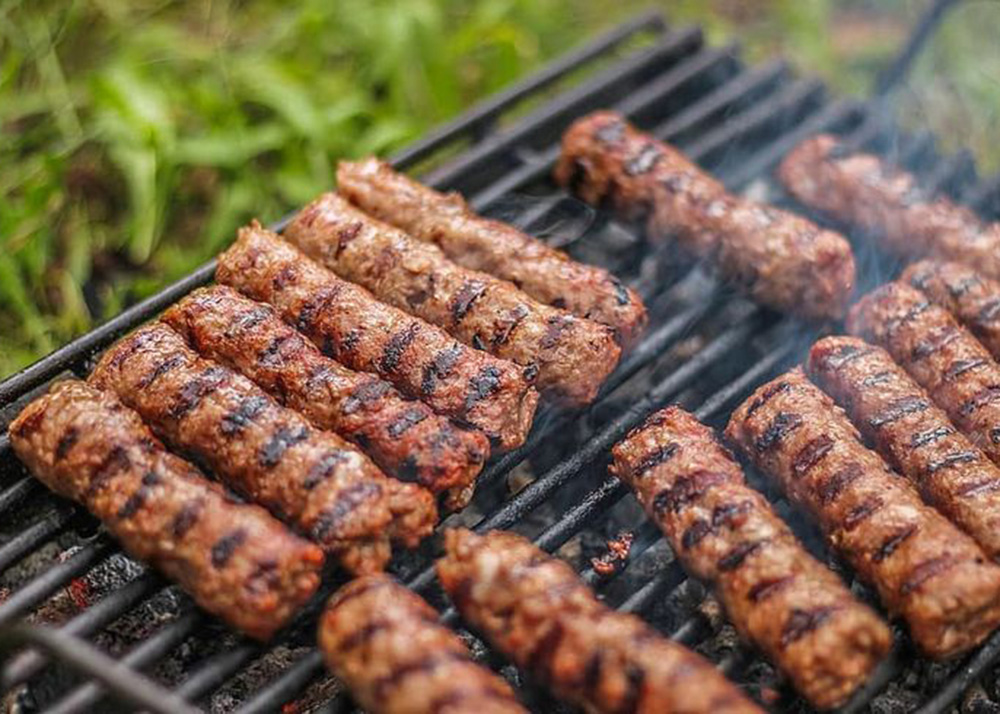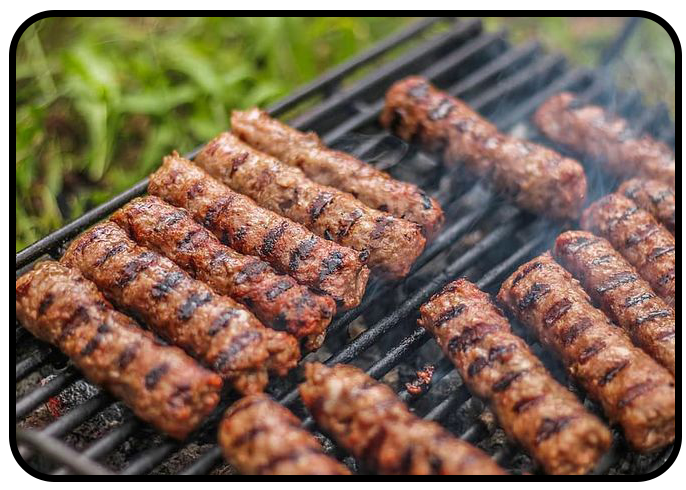
Albanian Pastiçe: Easy baked pasta recipe
Discover Albanian pastiçe: bucatini with feta and eggs baked into a golden pie—simple, nourishing and perfect for hectic days.
“Albanian Qofte, a meatball full of robust flavors and a rich history. This article introduces you to the different variants and methods of preparation of Albanian Qofte, perfect for those looking to broaden their culinary horizons. Our recipe gives you the chance to make this beloved Albanian delicacy at home.”

Not so long ago, the traditional trinity of potatoes, vegetables, and meat was a daily staple at many Dutch family dinners. Often, this meat was a meatball, made from seasoned mixed pork and beef mince. The humble meatball thus became an integral part of our national culinary pride and comfort.
But times change and so has the meatball. Nowadays, meatballs are seasoned with a variety of exotic spice blends, including Cajun, Oriental, or even Turkish.
But, as you might be thinking, we’re familiar with the Turkish variant from our travels to the Mediterranean. There, a meatball is called “köfte,” and it turns out that every country has developed its own interpretation of köfte.
Read more about the journey of the Dutch Gehaktbal here.
In Albania, qofte is also a key part of the national culinary tradition, making it comparable to the Dutch meatball.
Albanian qofte is not just a dish: it’s much more than that. Qofte brings families and friends together. Families gather to prepare these tasty meatballs, sharing stories from the past and enjoying the cooking process together. The qofte recipe is simple: it requires minced meat, onions, garlic, and spices. Qofte tastes delicious as a main course or as a snack in between meals.
In Albania, you will find qofte in various versions, each with its own regional twist and flavor profile. The three most famous variants are:
Qebapëve (Kosovo): This variant is distinguished by the use of baking soda, sparkling water, and flour, which results in a lighter texture and unique fizzy aroma. This version is native to northern Albania and originally comes from Kosovo.
Karnacka (Korçë): This variant uses soaked old bread as a binder, which makes the texture juicier and softer. The town of Korçë is located near Lake Ohrid in eastern Albania.
Traditional Qofte: This variant uses breadcrumbs or toasted crumbled bread as a binder. A notable aspect of this version is using a considerable amount of garlic.
Each variant also has its unique underlying recipes, depending on the region or even the family.
Albanian qofte can be prepared in different ways, each offering a slightly different taste and texture:
Pan-fried: This method gives qofte a crispy exterior and a tender interior. It’s quick and easy, perfect for a weeknight meal.
Baked: Baking qofte in the oven gives them a softer texture and allows the flavors to blend beautifully. Often, qofte are baked together with, for example, potatoes in the same dish. This method is also healthier because it uses less oil.
Grilled: Grilling, or as Albanians call it, “qofte zqara,” is a favorite. The smoky flavor from the grill enhances the meatballs, making them incredibly delicious.
Albanian qofte (the word is both singular and plural) is versatile. They can serve as a main dish, a snack, or a filling for your sandwiches. Traditionally, they are served with xaxiq (the Albanian version of tzatziki) and homemade fries.
In short, Albanian qofte is not just a dish; it is an experience. So invite your friends and family over, fire up the barbecue (or preheat your oven), and enjoy our delicious recipe together.

Geniet van de authentieke smaak van Albanië met dit eenvoudige en heerlijke recept voor Qofte. Dit gerecht, diepgeworteld in de Albanese traditie, bestaat uit sappige gehaktballen gemaakt van runder- of kalfsgehakt, verrijkt met knoflook, ui, oregano, en een mix van specerijen. Serveer ze gegrild of gebakken in de oven, en geniet van een rokerige en smaakvolle maaltijd die perfect is als hoofdgerecht of als snack. Traditioneel geserveerd met xaxiq en frietjes voor de ultieme culinaire ervaring.
Keuken: Albanees
Gang: Hoofdgerecht, Snack
Trefwoord: Qofte Recept, Albanese Gehaktbal, Albanese keuken, Albanees eten.

Discover Albanian pastiçe: bucatini with feta and eggs baked into a golden pie—simple, nourishing and perfect for hectic days.

The flag of Albania is more than just red and black. This article explores the deeper meaning behind its national symbols – from the double-headed eagle to the traditional ‘Shqiponja’ hand gesture, the unique Albanian language, and the country’s rich cultural heritage. A story of pride, identity, and history captured in one powerful symbol.

This homemade chili oil with Extra Virgin olive oil is a flavor bomb that’s also great for your health. Easy to make and incredibly versatile.

Albania is home to thousands of medicinal plants. Discover how traditional herbal wisdom not only impacts lives, but also shapes a unique export industry.

Despite an increase in risk factors such as an unhealthy diet and less physical activity, cardiovascular mortality in Spain remains surprisingly low. What explains this mysterious ‘Spanish Paradox’? Discover how a key element of the Mediterranean diet plays a crucial role.

The Albanian olive harvest is severely impacted by a labor shortage, leading to a significant decline in olive oil production and exports. In the first nine months of 2024, exports dropped by 60% compared to the same period in 2023. This not only poses challenges for the domestic market but also hinders Albania’s position as an emerging olive oil producer.
One Response
Wifey gegeten in een lokaal arbeiders restaurant in Peshkali en ik vind ze heel erg op frikandellen lijken…